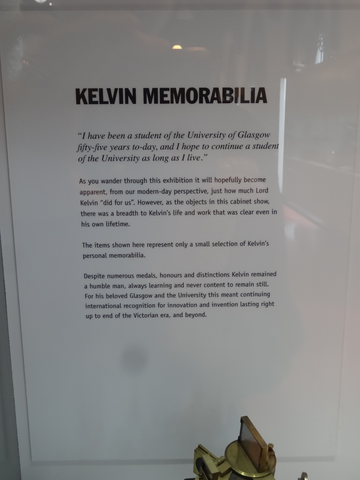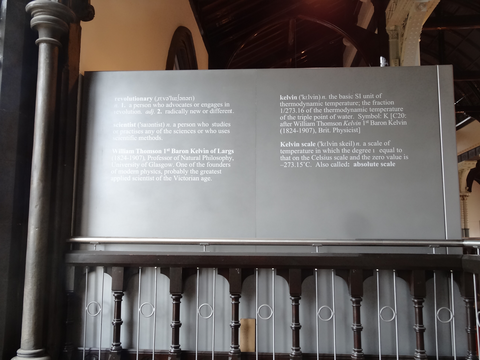I am never content until I have constructed a mechanical model of the subject I am studying. If I succeed in making one, I understand. Otherwise, I do not.
tl;dr: William Thomson 1st Baron Kelvin of Largs is a revolutionary scientist.
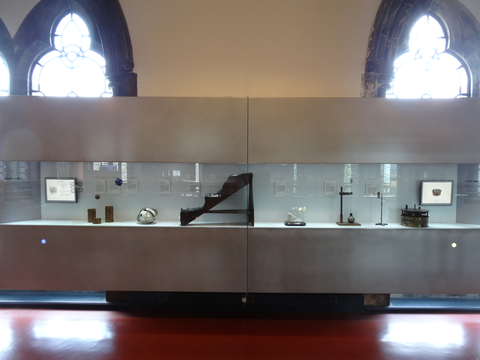
I visited Glasgow University in pilgrimage to the birth-place of Glasgow Haskell Compiler. Wim Vanderbauwhede gave me guide to Glasgow University. He also recommended me to Lord Kelvin’s display at Hunterian Museum built into G.U. In front of this shelf I quivered and almost cried.
At first glance, I had no guess what are these gadgets and widgets are designed for.

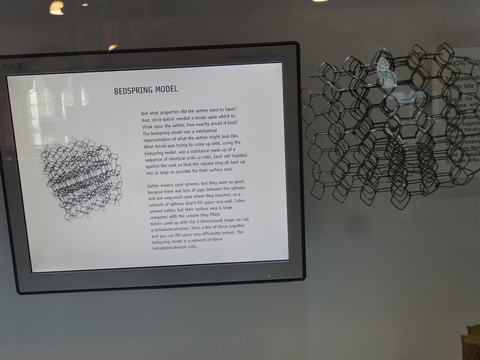
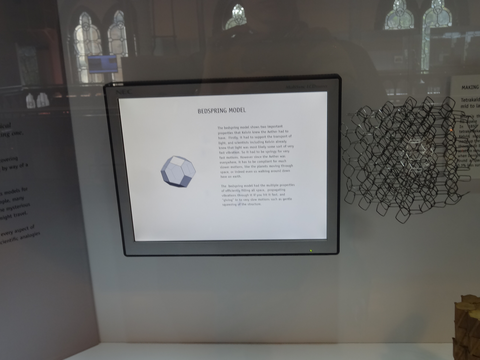
Aether. I was shockingly reminded that the term aether, in my dictionary fall into the same category as homunculus and philosopher’s stone, once belonged to a fundamental hypothesis of physics, and was subject of serious study. I was also shocked to find out the way William studied aether. Instead of manipulating equations, he cut and bent wires, welded them together, tied the model to strings and spring scales to measure its response to external force. Perhaps he took this model in his hand and shook it in his hand to get some instinction.
I went to the right and found something impressed me even more.
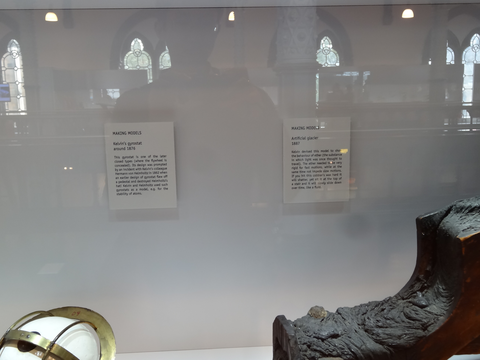
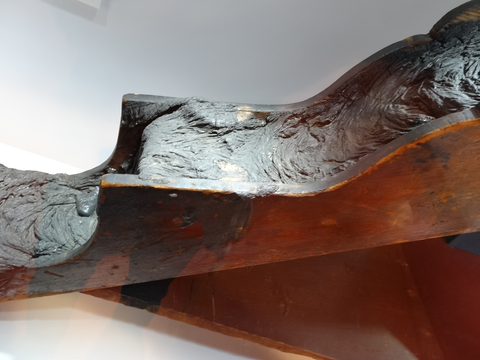
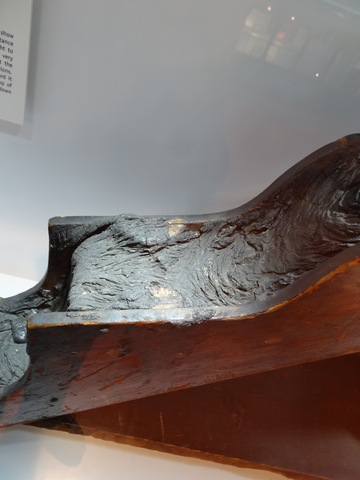
This ugly pile of mud is quite different to beauty and simplicity of the equations of electromagnetism. Yet, this is William’s way of tackling the question.
The aether needed to be very rigid for fast motions, while at the same time not impede slow motions (of e.g. the Earth). This cobbler’s wax is a material that behaves as solid for fast motion (it will shatter when hit with a hammer) but as liquid for slow motion (it will slowly flow down the glacier.) I was furter impressed when I recognized a nozzle crafted at the midpoint of the ladders. I can read William’s intention of studying the equations of motion of the matter.
The equations of motion of aether as viscoelastic mechanical continuum born out of mud, was later distrilled by Maxwell and then by Heaviside to the form we know today. One of the fundamental laws of physics.
Making models
In sympathy, I recalled my experience in undergraduate school. Analytical mechanics is one of the first subject taught in the university. We received lectures from one of the top quantum physicist available, and we also studied Landau & Lifshitz by ourselves. At those classes I firmly argued against principle of least action, saying that it breaks causality principle and contradicts free will, to think that the path of motion is determined from its starting point and its end point. If least action principle were correct, what happens when one first determines the path, and then put his hand and block the path (the MATRIX aborts with a failed assertion? Such phenomena has never been observed!)
The teacher argued that the equation-of-motion model and the least-action model are mathematically equivalent. We can deduce one model from the other. In fact, the textbook proof is not hard for me to reproduce. However, I was not convinced. It is okay to apply math on physical deduction and engineering designs. But believing that we can mathematically rewrite fundamental laws of physics is no different from believing in psychokinesis. We cannot bend spoons just by thinking so. We cannot fly by mentally rewriting the law of gravity. Consider how many kids, including myself, have been trying really hard to do so. This is an experimentally disproved idea.
Still, I made approach from many directions to understand this idea. In one page of my notebook there is a design drawing of a contraption made of cardboard boxes, strings, pulleys and small weights, carefully balanced to encode the Lagrangian integral, so that a central string would approximate a parabola.
In retrospect, young me had many thing to learn. The laws of physics are not given and fixed. They are human product, and subject to change. And although elementary particle physicists tend to declare that “the action principle is the foundation of everything,” their theory of everything also comes with terms and conditions.
I don’t clearly understand why the cardboard box model helped young me in undertanding and accepting the diversity in physics. But I hope the episode help you understand my sympathy to the following William Thomson’s motto:
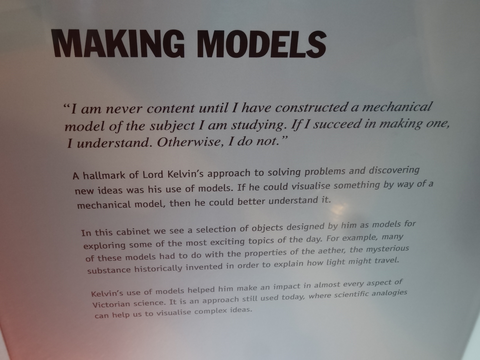
Well, aether was a theory that now went to extinction. But he also left other models that are still alive today.
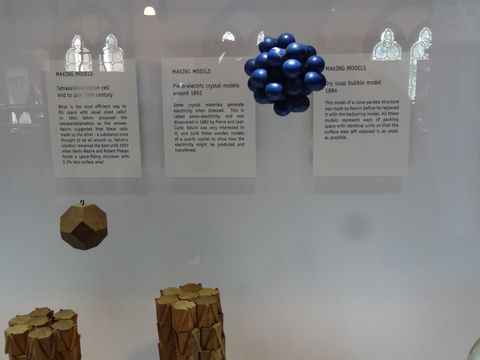
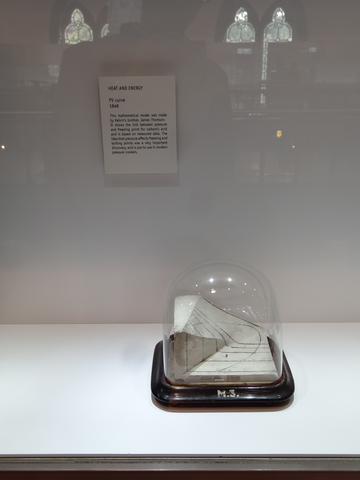
I was happy to find that he (his brother in this case) knew the joy of working with clay. They also knew the importance of materializing the potential function to the form we can touch and study. To me the model shines like an OOPArt, given that there was no CADs nor 3D printers at that age. I am not at liberty and quality to say, but if my lectures of thermodynamics used not only partial differential operators but also these models, it should have been much easier for me to understand the meaning of the mathematical arguments.
He introduced brand new scientific apparatus and led teaching by example and demonstration.
I cannot help feeling that young me fitted more well to 19th century Glasgow University, rather than 21st century Kyoto University classroom.
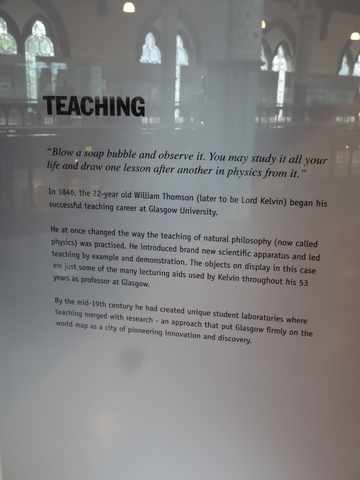
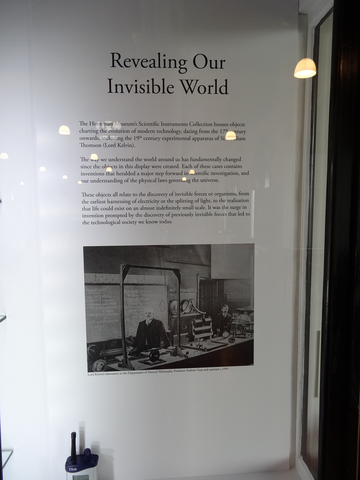
The life and soul of science is its practical application.

For this quote, I’d rather prefer the position of defending my friends and myself in theoretical physics and pure science, from high demand of practical application. The frontiers of science has drastically expanded since the days of William’s.
Still, if we believe the quote his house was the first in the world to have a complete electric lighting system, William was an alpha geek. Cool.
There is nothing new to be discovered in physics now. All that remains is more and precise measurement.
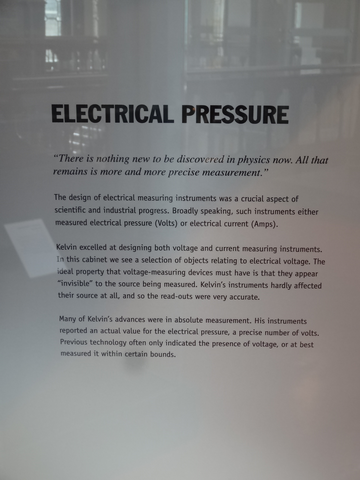
The attribution of this quote to William has been disputed. I have heard of this quote in the annonymous context that an old professor recommending one of his student not to become a physicist because there’s no future to the job. The student did not follow the advice and later became one of the founders of the quantum mechanics.
In a sense the quote is honorably attributed to William Thomson, I thought. He have invented many devices that contributed to precise measurement. It is him that led trans-Atlantic communication cable to success. He predictetd the attenuation effect of the seawater not discovered by ground-based experiment and designed the right cable. And his precise measurement technology made the fast-readout possible.
After this achievement William Thomson was elevated to Lord Kelvin.
I enjoyed a room-full of Lord Kelvin display, and eventually walked back in front of my most favorite shelf thinking. William’s love of mechanical model brought him a success as both a physicist and an inventor. Although, insisting on mechanical model also makes it difficult to understand quantum mechanics. It is already cumbersome to encode Lagrangian by strings and weights, aether by bedsprings. Not to mention more sophisticated theories.
But wait. Today we have computers, which have vast unexplored possibility of encoding models. Recently I see the studies on proof-assistants and automated proofs have been rapidly growing, both in theory and in practice. I suddenly realized the source of my love to computer simulations. Computer simulations are not just a compensate or substitute to laboratory experiments; we can also use it to encode theoretical understanding. Furthermore, the understanding encoded in machine readable forms are extremely easy to reproduce and share, if e.g. put into github. There is little suffering from confusion and miscalculation. It will be also easily patched when a mistake is found.
I felt my mental barrier to criticisms desolve. It was actually a barrier to understanding. Computer programs and scientific theories shares common virture; they are best when they’re shared, maintained, updated, and patched. Features and the bug reports should be tested for reproducivity, but in the same time IS PROVIDED “AS IS”, WITHOUT WARRANTY OF ANY KIND. From time to time it may need completely refactoring.
It is the way that leads to the truth of the life.
I silenly chanted the motto in its rephrased form.
I am never content until I have constructed a mechanical model of the subject I am studying. If I succeed in making one, I understand. Otherwise, I do not.
Conclusion
I’ll conclude the article with a couple of my favorite quotes.
To live among friends is the primary essential of happiness.
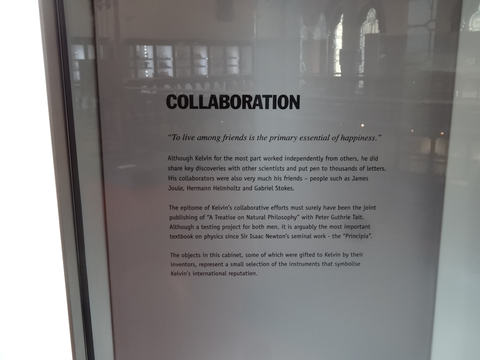
I hope to continue a student of the University as long as I live.
